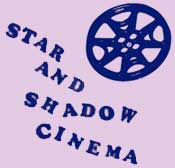Surrealists & Cinema
Dir. Michel Zimbacca, French, subtitled English, French
-
Thu 18 October 2012 // 19:30
/ Cinema
SURREALISTS & CINEMA
Since the very beginnings of their movement in 1924 up until today, surrealists have had a close relationship with cinema - whether as enthusiastic cinema-goers, commentators and critics; or as film-makers and screenwriters themselves; or even through inventing scenarios for imagined films that would never be made.As the French director and screenwriter Edmond T. Gréville put it, ‘If Surrealism had not existed outside of cinema, then cinema would have invented it.’
Evening consists of introductory talks by members of Leeds Surrealist Group, and screenings of five short films by the French surrealist Michel Zimbacca, a member of the surrealist group in Paris since 1949 - and he continues to be so today.
From his first film made in 1946, Square du Temple, inspired by the view overlooking the park from his parents’ apartment in Paris, Zimbacca worked in the French film industry on commissioned feature films, which he regarded as entirely separate from his creative expressions, reserved for independently made short films.
His second independent film, L’Invention du monde (1952), with a commentary written by the surrealist poet, Benjamin Péret, exalts the vitality and diversity of so-called primitive thought that inspired a surrealist sense of the poetic. A montage film made up of images, objects and sounds over which Péret’s words provide a rapport between verbal images and their visual counterparts. According to the French film critic Ado Kyrou, L’Invention du monde celebrates ‘the identity and permanence of primitive myths as expressed through the objects of tribal art.’ L’Invention du monde was screened at both the ICA and the Edinburgh Festival in 1953.
Originally intended as the third reel of L’Invention du monde, the next film screened,
Quetzalcóatl, le serpent emplumé (1952) was made as a distinct film, relating the tribulations of the Aztec god of death and rebirth as described in the Borgia Codex.
Ni d’Ève ni d’Adam (1968) is a self-contained fragment adapted from a scenario written eight years earlier for a longer film, for which the funding could not be raised. This short film intertwines the desire for immortal love with its opposite, embodied in the appearance of Jean Benoît in his remarkable costume of The Necrophile, haunter of cemeteries.
Finally, Évocation de l’Écart Absolu (2011) was made to a scenario originally written in 1965, attempting to capture the spirit of the exalting moments of the exhibition, L’Écart Absolu (Absolute Divergence), the XIth International Exhibition of Surrealism, organised by the French surrealist group at the Galerie L’Oeil in Paris, in which Zimbacca had been an enthusiastic participant.
FILMS
Square du Temple (1946), dir. Michel Zimbacca, 8 min, B&W.
L’invention du monde (1952), dir. Jean-Louis Bédouin & Michel Zimbacca, 26 min, B&W.
Quetzalcóatl, le serpent emplumé (1952), dir. Jean-Louis Bédouin & Michel Zimbacca, 8 min, colout.
Ni d’Ève ni d’Adam (1968), dir. Michel Zimbacca,10 min, B&W.
Évocation de L’Écart Absolu (2011), dir. Michel Zimbacca, 8 min, colour.
